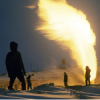 Ashwin Kumar Mar 4, 2013 01:29 |
Thank you for the proposal!
1) In the summertime, the Arctic experiences both rain and snow. How would this influence the merits of seeking to enhance precipitation?
2) Is there evidence that seeding could induce snowfall in the Arctic? Isn't Arctic region precipitation mainly influenced by moisture transport?
|
 Andrew Lockley Mar 5, 2013 01:49 | Proposal contributor
Seeding rainclouds would be counter-productive. Only when snow was predicted would seeding make sense.
Seeding generally has a reputation for poorly-tested efficacy. In the case where the right cloud conditions for induced heterogeneous condensation could be demonstrated or predicted, seeding may be productive. Detailed studies would be required to establish how frequent the appropriate conditions are, and how viable/effective any seeding programme would be.
|
 Michael Maccracken May 2, 2013 06:37 |
The general problem is that one wants the snow cover when it is warm (to reflect away solar radiation, and insulate the surface from the warmer atmosphere) and one does not want the snow (at least, does not want its insulating effect) in the fall and winter so that heat can be carried to the surface and radiated away, thus cooling the surface/permafrost/etc. Ideally, one would want to make snow in the early spring as the Sun comes up and then deplete the snow in the early fall (e.g., by clearing clouds away, darkening the surface, etc.) as the Sun sets. Also, the presence of low clouds in the winter tends to warm the surface, so it would be desirable to dissipate low clouds (and high clouds) in the winter. Quite a challenge.
Also, the scheme would seem to be quite weather dependent, likely making it difficult to accomplish logistically, especially out over the sea ice.
The right types of weather systems also tend not to exist in the Arctic to get deep snows. It is usually so cold that the air is quite dry, and one seldom has situations with deep weather systems (although this may change as the Arctic ice cover diminishes--unfortunately, this would be most likely in the fall when we don't want snow rather than in the spring when we do). Thin layers of snow would seem unlikely to last long enough to make a significant difference.
I wonder what the analysis would be if one compared it to floating snow making machines that would draw their energy from the temperature difference between Arctic Ocean waters and the surface of the sea ice? I would imagine that it would be likely that too much icing would occur to make the approach work.
|
 Andrew Lockley May 3, 2013 03:38 | Proposal contributor
For clarity, I intended this to be done over land, not over the ocean. The albedo of fresh snow is dramatically higher than that of land, so even a couple of weeks of additional snow cover can make an appreciable difference to the energy budget over an annual cycle.
The proposal was for late season snowfalls - i.e. extending snow cover into the spring. I'm sorry if that wasn't clear from the wording.
Stripping out winter clouds was not my intention, but that may be possible using similar techniques. Any precipitation is water that is lost to the cloud, so winter seeding could conceivably work in reducing cloud cover and aiding radiation back to space. However, the snow resulting may act to insulate the surface, so care would need to be taken over the location of the seeding and the resulting precipitation.
|
 2013geoengineeringjudges 2013geoengineeringjudges Jul 10, 2013 12:12 |
Thank you for sharing your ideas and for the work invested to create this proposal. Your proposal has been considered carefully by the judges, and while the proposal has interesting ideas, and we appreciate the response to questions that were raised, it is unclear whether such a scheme would work to produce the desired effect, and whether the right conditions that would lead to success can be anticipated in advance and with sufficient frequency to implement an ongoing program of seeding clouds in the right place. We acknowledge that you point to some of these uncertainties in your comments, and note that solving the challenges posed by these uncertainties are critical to success of such a program.
|
